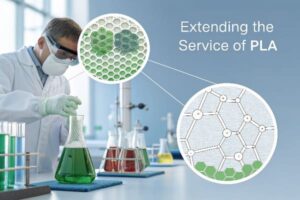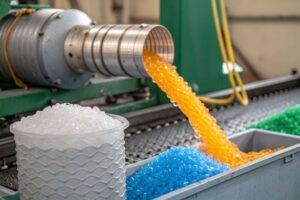Is your recycled PET (rPET)1 feeling weak and brittle? Are you struggling to get the performance you need from recycled plastics? A chain extender might be the answer you are looking for.
Chain extenders are special additives that help improve the properties of recycled PET (rPET) by increasing its molecular weight2. This makes the rPET stronger and more durable, allowing it to be used in a wider range of high-value applications that otherwise would not be possible.
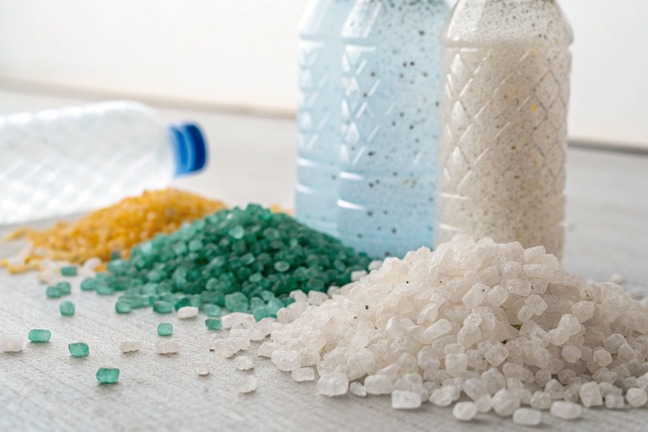
I remember when we first started working with rPET. It was exciting to see plastic waste being given a second life. However, we quickly realized that rPET often had weaker properties compared to new PET. This limited where we could use it. This is where chain extenders come in. They are crucial for making rPET competitive with virgin materials.
What is a Chain Extender?
Are you wondering what exactly a chain extender is and how it works its magic? You might be thinking it's some complex chemical. It is actually quite simple in concept.
A chain extender is a chemical compound that reacts with the ends of polymer chains. It creates longer chains. In rPET, which often has broken polymer chains due to recycling, a chain extender helps to repair and link these broken pieces. This improves the material's strength and and overall performance.
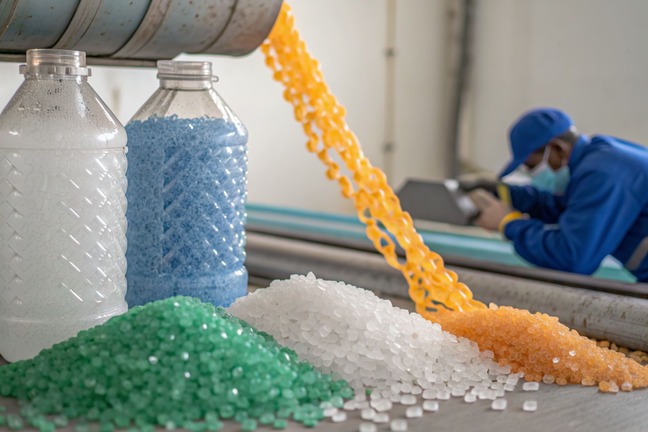
When PET is recycled, especially through mechanical recycling, its long polymer chains can break down. This process is called degradation. This degradation leads to a lower molecular weight. It makes the rPET weaker and more brittle. Think of it like a chain missing some links. It is not as strong. This is where a chemical like a chain extender comes in handy. It acts as a bridge. It connects these broken chains. This makes them longer and stronger.
There are different types of chain extenders. Some are epoxy-based, some are diisocyanates3, and some are carbodiimides4. Each type has its own strengths. For example, epoxy are known for their strong reaction with carboxyl and hydroxyl groups5. These groups are common in degraded polyesters like rPET. This makes epoxy very effective at increasing molecular weight. They also improve mechanical properties. The choice of chain extender depends on the specific needs of the rPET application. It also depends on safety considerations. For example, some chain extenders are suitable for food contact applications. Others are not.
| Chain Extender Type | Mode of Action | Typical Applications | Advantages | Disadvantages |
|---|---|---|---|---|
| Epoxy-based | Forms strong bonds with hydroxyl and carboxyl groups | General purpose rPET enhancement | Good overall performance | Some types might have migration issues |
| Diisocyanate | Reacts with hydroxyl groups | High-performance rPET, engineering plastics | Very effective at increasing molecular weight | Often moisture sensitive, some toxicity concerns |
| Carbodiimide | Reacts with carboxyl and hydroxyl groups | Food contact rPET, durable goods | Highly reactive, improves hydrolysis stability | Can be more expensive than other types |
How to Use a Chain Extender?
Are you curious about how to actually incorporate a chain extender into rPET production? You might be thinking it involves complex machinery. It is typically a straightforward process.
Chain extenders are usually added during the melt-processing of rPET. This means they are mixed into the molten plastic. This allows them to react with the polymer chains. The most common methods include extrusion or injection molding, where the chain extender is dosed accurately to achieve the desired effect.
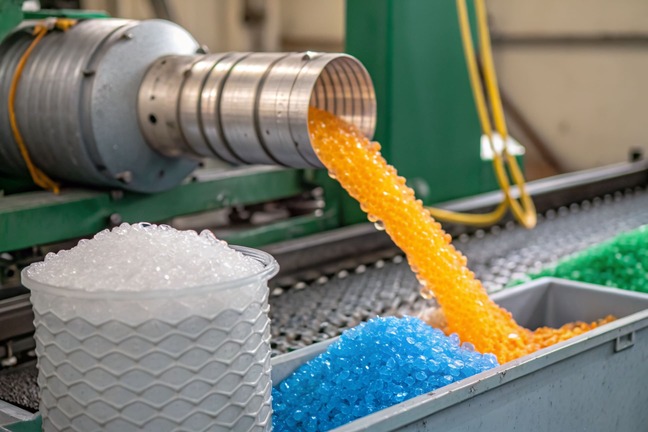
When Langyi started working with rPET producers, one of the first questions was always about adding the chain extender. It is not as complicated as it sounds. The chain extender is typically supplied in a pellet or powder form. It is blended with the rPET flakes or pellets before or during the melting process. For example, in an extruder, our carbodiimide chain extender can be fed directly into the hopper with the rPET. As the rPET melts, the chain extender disperses evenly. It then starts reacting with the degraded polymer chains.
The processing conditions, such as temperature, screw speed, and residence time, are important. They influence how well the chain extender works. Optimizing these conditions ensures maximum efficiency. It also ensures the best improvement in rPET properties. We often work with our customers. We help them find the right dosage and processing parameters. This ensures they get the most out of our chain extenders. Choosing the right chain extender is just the first step. Proper incorporation is just as important. Incorrect dosing or processing can lead to suboptimal results. It can even lead to issues like gels or inhomogeneities in the final product.
| Dosing Method | Description | Advantages | Considerations |
|---|---|---|---|
| Pre-blending | Chain extender is mixed with rPET pellets before processing | Simple, low cost for bulk processing | Can lead to segregation if not mixed well |
| Gravimetric Feeder | Chain extender is precisely dosed into the extruder throat | High accuracy, consistent feeding | Requires additional equipment |
| Masterbatch | Chain extender is pre-dispersed in a polymer carrier | Easy handling, good dispersion | Higher cost due to carrier polymer |
What's the Reaction Mechanism of Chain Extender in rPET?
Do you want to know what happens at the molecular level when a chain extender is added to rPET? You might think it is a black box. It is a specific chemical reaction.
The primary reaction mechanism involves the chain extender reacting with the end groups of the rPET polymer chains. In degraded rPET, these are mainly carboxyl and hydroxyl groups. The chain extender forms new covalent bonds6. These bonds link the shorter polymer chains together. This effectively increases the overall molecular weight2 and improves mechanical properties7.
From my experience, understanding the chemistry behind chain extension is key. It helps you choose the right product and optimize its use. For example, our epoxy-based chain extenders are particularly effective with rPET. This is because they react readily with both carboxyl (-COOH) and hydroxyl (-OH) groups. These groups are abundant on the ends of degraded PET chains. When an epoxy group encounters a carboxyl group, it can undergo an esterification reaction. This forms a new bond. If it encounters a hydroxyl group, it can also react to form an ether linkage.
These reactions effectively link the shorter polymer chains. This increases the overall molecular weight2. A higher molecular weight2 means better mechanical strength, improved melt viscosity, and reduced brittleness. It is like patching up small tears in a fabric to make it whole and strong again. This chemical repair process is why chain extenders are so valuable in the circular economy8 of plastics. They make it possible to use recycled materials in demanding applications. This reduces the need for virgin plastics.
| Reactant on PET Chain | Reaction with Epoxy | Resulting Bond Type | Impact on rPET |
|---|---|---|---|
| Carboxyl Group (-COOH) | Esterification | Ester bond (-COO-) | Increases molecular weight, reduces acidity |
| Hydroxyl Group (-OH) | Etherification | Ether bond (-O-) | Increases molecular weight, improves toughness |
| Water (Trace) | Hydrolysis (side reaction) | Opening of epoxy ring | Can consume epoxy, reduce efficiency |
Conclusion
Chain extenders are vital for upgrading rPET. They boost molecular weight and improve mechanical properties. This makes rPET usable in more demanding applications.
Explore the advantages of recycled PET (rPET) to understand its impact on sustainability and performance. ↩
Discover the significance of molecular weight in determining the strength and durability of materials. ↩
Explore the unique benefits and applications of diisocyanates in improving plastic materials. ↩
Learn about carbodiimides and how they contribute to the quality of recycled PET. ↩
Understand the importance of hydroxyl groups in chemical reactions involving polymers. ↩
Understand the role of covalent bonds in determining the structure and strength of materials. ↩
Understand how mechanical properties influence the usability of materials in various applications. ↩
Learn about the circular economy and how it promotes sustainability in material usage. ↩




